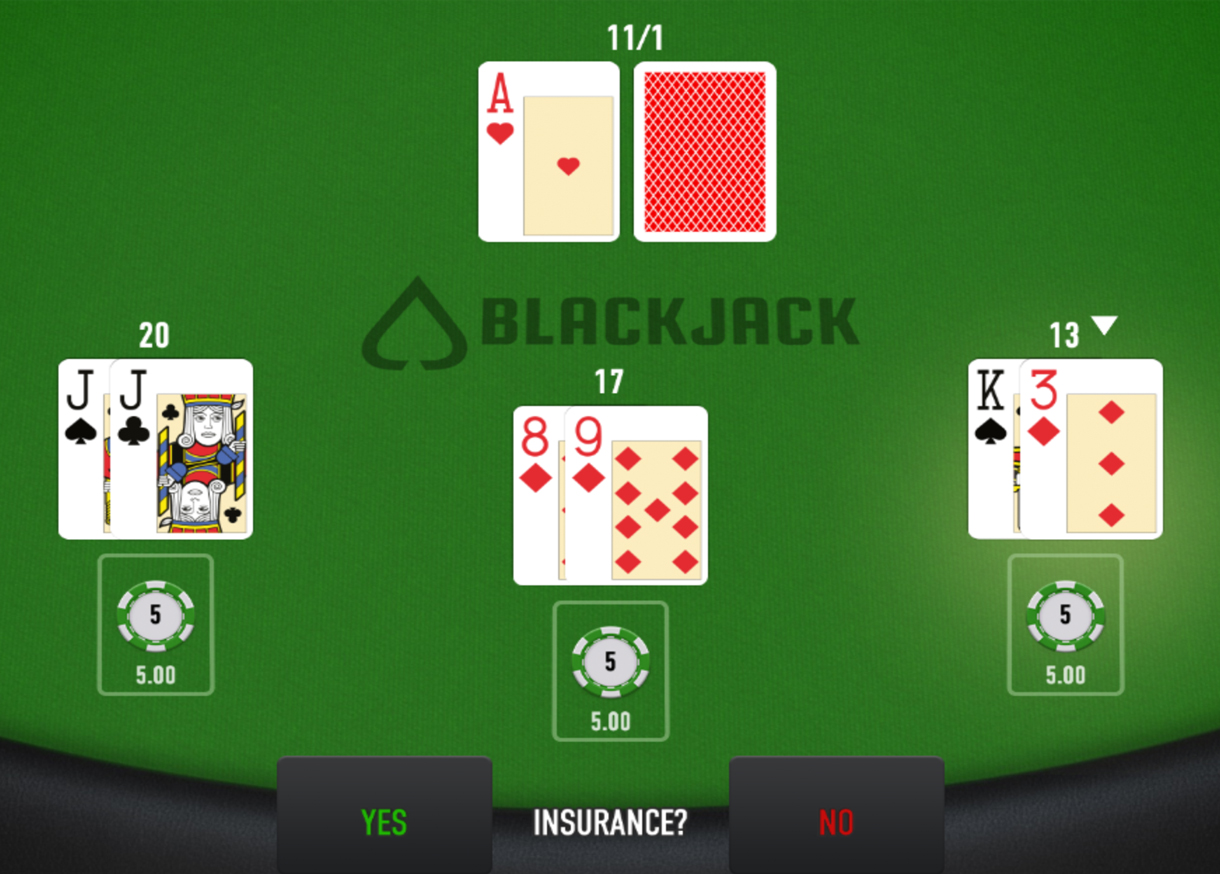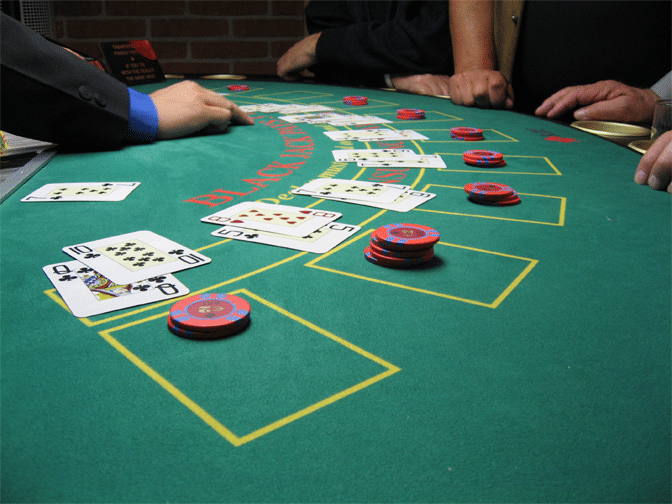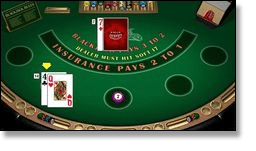Blackjack Rules Dealer Ace
- Blackjack Rules Dealer Ace Inhibitors
- Blackjack Rules Dealer Ace Hardware Store
- Blackjack Rules Dealer Has 21
Be careful double or splitting if the dealer has a ten or ace showing. At most live dealer brands, you will lose everything if the dealer gets a blackjack. Under this 'no peek' rule, the only time you should put more money out on the table against a potential dealer blackjack is to split two aces against a dealer 10. The house edge under the. Quoting from Wikipedia (due to lack of an official online source for blackjack rules): If a player holds an ace valued as 11, the hand is called 'soft', meaning that the player cannot go bust by taking an additional card; the value of the ace will become 1 to prevent the hand. Basic Blackjack Rules: The goal of blackjack is to beat the dealer's hand without going over 21. Face cards are worth 10. Aces are worth 1 or 11, whichever makes a better hand. Each player starts with two cards, one of the dealer's cards is hidden until the end. To 'Hit' is to ask for another card. A pair of aces gives the blackjack player a starting hand value of either a 2 or a soft 12 which is a problematic starting hand in either case. Splitting aces gives a player two chances to hit 21. Splitting aces is so favorable to the player that most gambling establishments have rules limiting the. As the dealer, the basic rules of blackjack still apply. Cards 2 through 10 are worth their face value. The jack, queen and king are worth 10 points each. The ace has a value of either 1 point or 11 points, depending on its usage in your hand. The advanced rules of blackjack, however, are a little bit different.
Ace-seven is by far the most difficult hand for the professional blackjack player to handle. Depending on what the dealer is showing, you will either hit, stand, or double down.
Basic Strategy tells us that we should double if the dealer is showing 3 through 6, stand on 2, 7, and 8, and hit on 9, 10, and A. This may come as a shock to some since common sense tells us to stay with an 18 regardless of what the dealer has. Let's look at the math behind the strategy.
First, we must look at A-7 as a plain old 18. Basic Strategy dictates that we stand on a pat 18 regardless of what the dealer is showing; we want to get to 17 or higher and then let Lady Luck determine the outcome. This isn't necessarily the case for a soft 18.
- If the dealer is showing a 2, the return on an 18 is $.12 for each dollar invested.
- For 3 through 6, this jumps up ranging from $0.40 to $0.50 per dollar.
- 7 is also $0.40.
- At 8, it goes back down to $0.11.
- 9 through A plummets into a negative return of $0.18 to $0.10 loss per dollar.
So is it really worthwhile to go against the common sense factor and hit an 18 if the dealer is showing 9-A?
- Hitting A-7 on a dealers 9 gives us a negative return of $0.10,
- 10 a negative return of $0.14, and
- Ace a negative return of $0.09.
The spread here, while not seeming like much, is less than the -$0.18 to -$0.10 return of staying. To minimize the damage, hitting on these cards is a necessity.

Doubling is the third option with this hand. In this case, you count the hand as an 8 and pray for a 9 or 10, or you count it as an 18 and hope for an Ace through 3.
First of all, doubling when the dealer is showing:
- 9 through A gives us a -$0.29 to -$0.36 return, far greater of a loss than hitting. So doubling on those cards is out of the question.
- Doubling on 8 is also a negative return (-$0.03), whereas it's a positive return to hit. Again, out of the question.
- Doubling on 7 is a positive return of $0.22, which is less than the $0.40 you will get with staying. If the dealer is showing a 7, it makes economic sense to stand.
- Doubling on the dealer's 2 is also $0.12 return, but it is less than a cent less difference of a return than standing. In the long run, this adds up to major dollars, believe me. You will want to stay rather than risking the double in this case.
- That leaves 3 through 6. The math here gets tricky, so pay careful attention. The numbers above regarding standing on 18 don't take into account the power of the Ace. As you know, the Ace can be counted as either a 1 or an 11, and because of this, hitting on A-7 is not nearly as dangerous as hitting a pat 18. In fact, the 23% (3/13) chance of drawing a card to better your 18 makes the diminished return on doubling the right move.
While the return ranges from $0.18 to $0.38 (compared to the $0.40 to $0.50 of staying), the 23% odds of improving plus the doubled amount of money pumped into the hand make doubling the most profitable choice.

Best Blackjack Bonuses

These bonuses allow you to play blackjack to clear the bonuses wagering requirements.
- Intertops Casino Classic
100% Up To $/€100
Rating
4.3/54.4/54.2/54.3/5
- Liberty Slots Casino
100% Up To $/AU$259
Rating
3.8/54.4/53.3/53.8/53.8/5
- Lincoln Casino
100% Up To $/AU$1000
Rating
4.0/54.4/53.8/53.7/54.0/5
More on How to play Blackjack

Hit or Stand gameplay is based on Atlantic City and Las Vegas multiple deck casinos rules. Blackjack rules vary from casino to casino, which makes learning blackjack strategy more complicated. However, many correct moves are fundamental enough that they do not differ from casino to casino, and most large scale casinos have very similar rules - usually matching those in Vegas or A.C.. The strategy tables for Vegas and A.C. are displayed below. To find strategy tables for a particular casino, you can visit BlackJack Info, a site that can generate customized tables.
Basic Blackjack Rules:
Blackjack Rules Dealer Ace Inhibitors

- The goal of blackjack is to beat the dealer's hand without going over 21.
- Face cards are worth 10. Aces are worth 1 or 11, whichever makes a better hand.
- Each player starts with two cards, one of the dealer's cards is hidden until the end.
- To 'Hit' is to ask for another card. To 'Stand' is to hold your total and end your turn.
- If you go over 21 you bust, and the dealer wins regardless of the dealer's hand.
- If you are dealt 21 from the start (Ace & 10), you got a blackjack.
- Blackjack usually means you win 1.5 the amount of your bet. Depends on the casino.
- Dealer will hit until his/her cards total 17 or higher.
- Doubling is like a hit, only the bet is doubled and you only get one more card.
- Split can be done when you have two of the same card - the pair is split into two hands.
- Splitting also doubles the bet, because each new hand is worth the original bet.
- You can only double/split on the first move, or first move of a hand created by a split.
- You cannot play on two aces after they are split.
- You can double on a hand resulting from a split, tripling or quadrupling you bet.
For more information about Blackjack rules,strategy, and etiquette you can visit Hit or Stand's recommended book list.
Below you will find the strategy tables for both Atlantic City and Las Vegas. These table are what the Hit or Stand games is based on. Hit or Stand accepts a correct move from either Vegas or A.C.(they differ only slightly). It needs to be noted that using the below tables will not cause you to make money - the odds are still against you. The only way to put the odds of Blackjack in you favor is to count cards which is a large topic of its own.
Blackjack Rules Dealer Ace Hardware Store
Las Vegas Multiple Deck
| Atlantic City Multiple Deck
| ||||||||||||||||||||||||||||||||||||||||||||||||||||||||||||||||||||||||||||||||||||||||||||||||||||||||||||||||||||||||||||||||||||||||||||||||||||||||||||||||||||||||||||||||||||||||||||||||||||||||||||||||||||||||||||||||||||||||||||||||||||||||||||||||||||||||||||||||||||||||||||||||||||||||||||||||||||||||||||||||||||||||||||||||||||||||||||||||||||||||||||||||||||||||||||||||||||||||||||||||||||||||||||||||||||||||||||||||||||||||||||||||||||||||||||||||||||||||||||||||||||||||||||||||||||||||||||||||||||||||||||||||||||||||||||||||||||||||||||||||||||||||||||||||||||||||||||||||||||||||||||||||||||||||||||||||||||||||||||
Blackjack Rules Dealer Has 21
People often ask how it is known that the strategy tables such as the ones above are correct. They are created and validated in two ways: The first method involves applying probability theory which uses extremely complicated mathematics. The second technique involves using computers to simulate thousands of blackjack deals that are played using different strategies to see which combination of moves give the best end results (the moves that cause one to lose money the slowest).